12. SAUCER MAGNOLIA
Magnolia x soulangeana

In Winter, the Saucer Magnolia is a pleasing shrub/small tree with interesting bark. But far earlier than most trees in the Westmoor Arboretum, the flower buds (inset) come alive. The buds grew on the tree the previous summer, and have spent the winter exposed to the elements. They do have a secret weapon, however.
PUFFER JACKETS
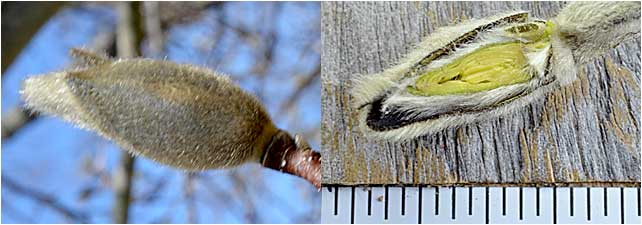
The flower buds of Magnolias are much different than regular deciduous trees. Instead of hard scales, the outer scale on a Magnolia is covered with thousands of tiny hairs called trichomes. Not only the outer bud scale, but also an additional one inside the outer scale. This double insulation is the Magnolia's own version of a Puffer Jacket! This allows them to jump start their flowering in the Spring.
EARLY STARTERS

In March, the flower buds begin to open their insulated buds and start flowering earlier than just about any tree. Why? As a species, Magnolia was formed millions of years before bees existed, back when dinosaurs were still around (95 million years ago). The trees are pollinated by beetles who track pollen from one perfect flower to another. This also explains the sometimes pungent aroma of Magnolias - they are appealing to beetles.
SPRING BLOOM
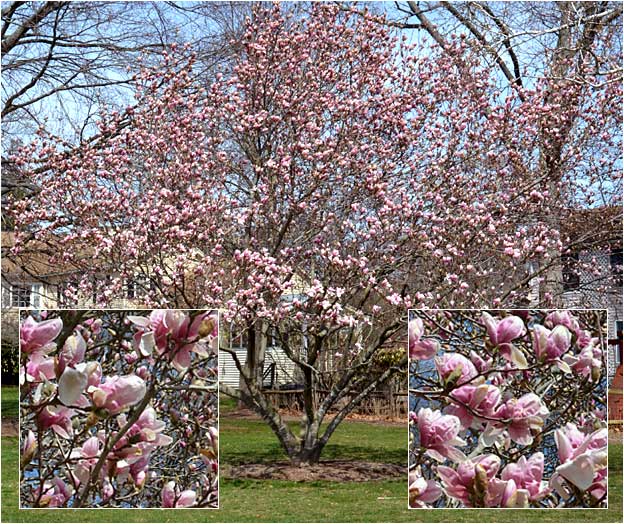
With this early start, Magnolias are the first to show us flowers - one of the earliest signals of Spring. The blooms last several weeks, and then the leaves begin to take over.
SPRING, LEAF OUT

Saucer Magnolias typically lose almost all their flowers before "leafing out" each Spring. By late Spring, the leaves are fully developed and the tree takes on its summer look.
SUMMER
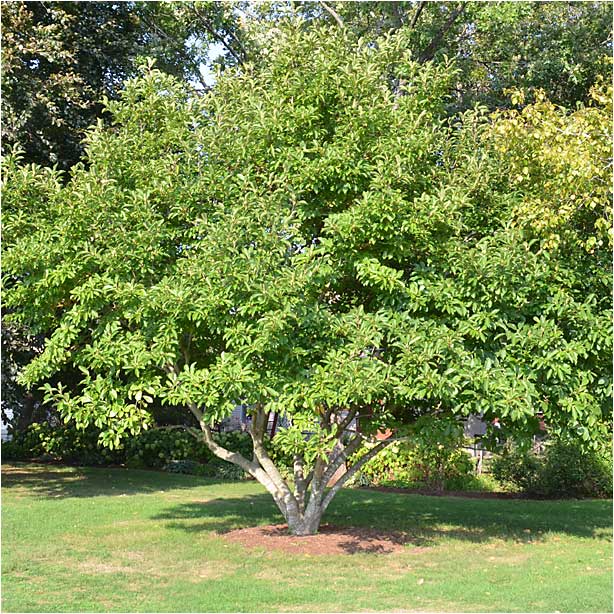
Although not a native U.S. tree (Japan), Saucer Magnolia is a very eye-pleasing small tree in the summer. Life span is short for a tree, typical of many ornamental trees, and 50 years is a very good run. Park Naturalist Douglas Jackson planted this tree in 2005.
SUMMER: BUD & FRUIT
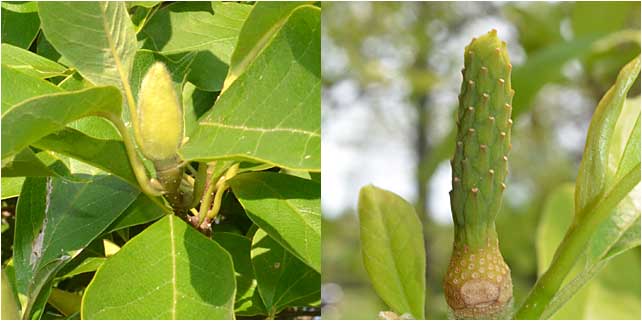
In Summer, the Saucer Magnolia still has two important jobs to perform. It must grow its flower buds for the following spring (the "puffer jackets"), and it must set and nourish its fruit. Magnolias have bizarre looking fruit (as befits a tree that hung out with dinosaurs) and will drop its seeds in the fall.
FALL, FRUIT & SEED
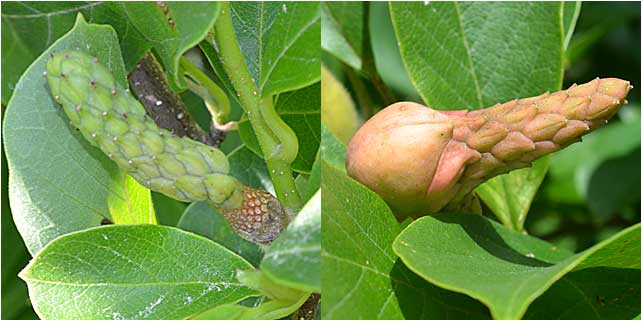
Over the end of the Summer the fruit will continue to grow (left). When mature, it changes color (right) and the pod will begin opening to shed the seeds that are inside it.